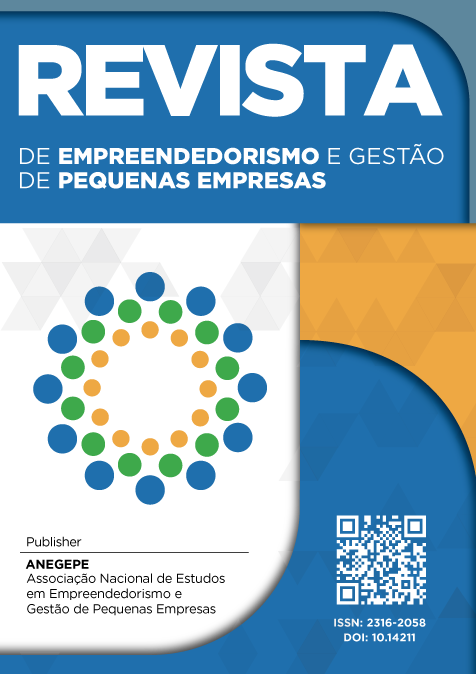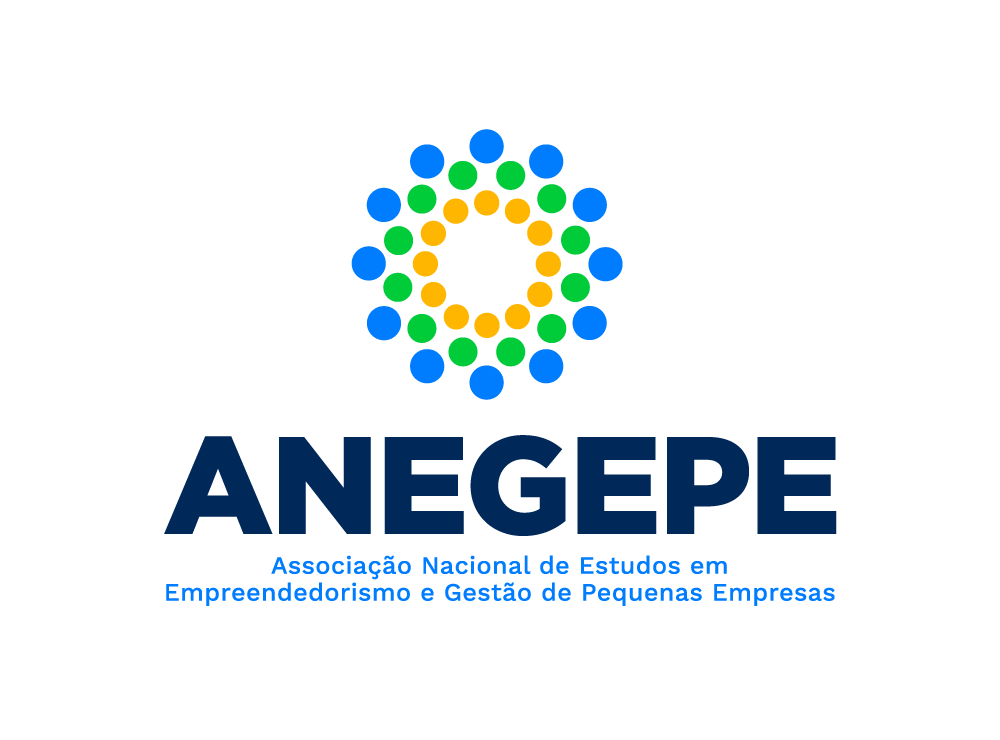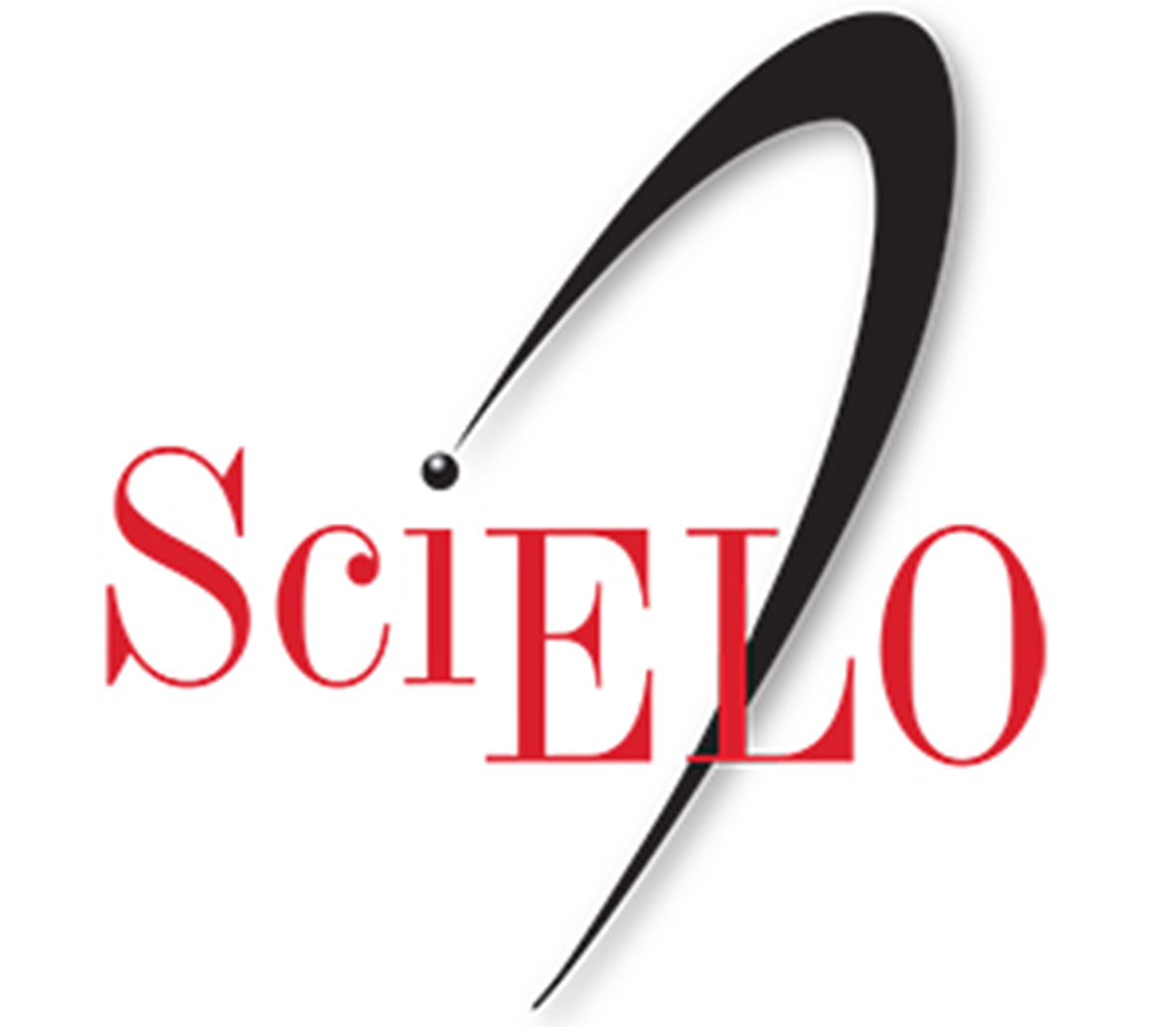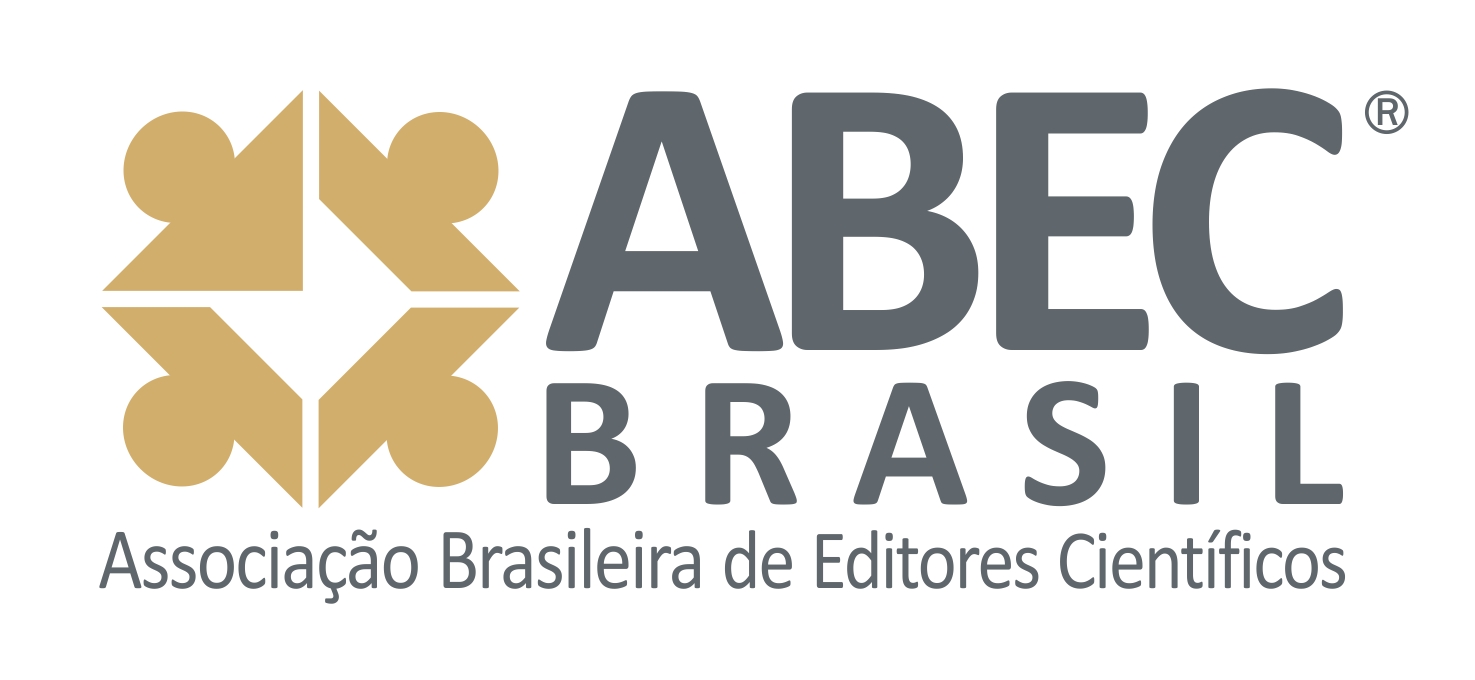La evolución de la metodología del programa Agentes Locales de Innovación (ALI) y su aporte a la gestión de la innovación en la empresa Medicatriz Dermocosméticos
DOI:
10.14211/ibjesb.e2078Palabras clave:
Empresa innovadora, Emprendimiento, Innovación, Agentes locales de innovaciónResumen
Objetivo: evaluar la influencia de la participación en los ciclos del Programa ALI, de 2013 a 2020, en el ambiente innovador de Medicatriz Dermocosméticos. Contexto investigado: la base de la metodología del Programa ALI fue definida por ocho premisas – resultados concretos; uso de indicadores; resultados para el Sebrae y el ecosistema de innovación; participación del equipo de la empresa; construcción colectiva de soluciones; instrumentos; empresas motivadas para innovar; y ALI, como facilitador para superar el dilema de tener potencial creativo, sin, sin embargo, convertirlo en innovaciones capaces de proporcionar un aumento de los ingresos. Intervención: para resolver los problemas diagnosticados, se realizaron algunas intervenciones a través de la adopción de los siguientes mecanismos, propuestos para cada ciclo de participación: innovación abierta, co-creación, marca, investigación etnográfica, satisfacción actual del cliente y del empleado. Resultados: en el primer ciclo se lanzaron 11 nuevos productos, utilizando nanotecnología y transversalidad sensorial; en el segundo, hubo una subcategorización de clientes y proyectos humanizados para clientes, empleados y círculo social; en el tercero, la remodelación de talleres, la creación de cursos remunerados, visitas escolares, pasantía supervisada y apoyo avanzado; y, en el cuarto, la creación de un modelo de reconocimiento a los empleados Conclusión: la promoción de la práctica continuada de acciones de innovación en las pequeñas empresas y los aportes a Medicatriz permearon las cuatro dimensiones de la innovación. La empresa entiende que invertir en desarrollo humano aumenta las posibilidades de que las organizaciones se vuelvan productivas y atractivas para sus empleados, proveedores y clientes.
Descargas
Citas
Associação Brasileira da Indústria de Higiene Pessoal, Perfumaria e Cosméticos. (2019). Panorama do Setor em 2019. Recuperado de https://abihpec.org.br/publicacao/panorama-do-setor-2019-2/
Associação Nacional de Pesquisa e Desenvolvimento das Empresas Inovadoras. (2016). Cases de sucesso em inovação fecham o ciclo de palestras da Conferência Anpei. Recuperado de http://anpei.org.br/cases-de-sucesso-em-inovacao-fecham-o-ciclo-de-palestras-da-conferencia-anpei/
Bachmann, D. L., & Destefani, J. H. (2011). Metodologia para estimar o grau de inovação nas MPE. Cultura do Empreendedorismo e Inovação. Recuperado de http://www.bachmann.com.br/website/documents/ArtigoGraudeInovacaonasMPE.pdf
Birkinshaw, J., Hamel, G., & Mol, M. J. (2008). Management Innovation. Academy of Management Review, 33(4), 825-845. https://doi.org/10.5465/amr.2008.34421969
Brasil. Lei nº 13.643, de 3 de abril de 2018. (2018). Regulamenta as profissões de Esteticista, que compreende o Esteticista e Cosmetólogo, e de Técnico em Estética. Recuperado de https://www2.camara.leg.br/legin/fed/lei/2018/lei-13643-3-abril-2018-786398-publicacaooriginal-155154-pl.html
Chesbrough, H. W. (2003). Open Innovation: the new imperative for creating and profiting from technology. Massachusetts, USA: Harvard Business School Press.
Child, J. (1997). Strategic Choice in the Analysis of Action, Structure, Organizations and Environment: Retrospect and Prospect. Organization Studies, 18(1), 43-76. https://doi.org/10.1177%2F017084069701800104
Damanpour, F., & Schneider, M. (2006). Phases of the Adoption of Innovation in Organizations: Effects of Environment, Organization and Top Managers. British Journal of Management, 17(3), 215-236. https://doi.org/10.1111/j.1467-8551.2006.00498.x
Dao, V., & Zmud, R. (2013) Innovating firms’ strategic signaling along the innovation life cycle: The standards war context. Journal of Engineering and Technology Management, 30(3), 288-308. https://doi.org/10.1016/j.jengtecman.2013.05.003
Dosi, G. (1982). Technological paradigms and technological trajectories: a suggested interpretation of the determinants and directions of technical change. Research Policy, 11(2), 147-162. https://doi.org/10.1016/0048-7333(82)90016-6
Estética Business Awards. (2019). Categoria indústria: empresa amiga do profissional/estética. Estética Business Awards. Recuperado de https://negocioestetica.com.br/premiacao/finalistas.php
Instituto Brasileiro de Geografia e Estatística. (2020). Pesquisa de Inovação 2017. Rio de Janeiro: Instituto Brasileiro de Geografia e Estatística. Recuperado de https://biblioteca.ibge.gov.br/visualizacao/livros/liv101706_notas_tecnicas.pdf
Johnson, J., Edquist, C., & Lundvall, B. (2003). Economic development and the national innovation system approach. Proceedings of the Globelics Conference. Rio de Janeiro, Universidade Federal do Rio de Janeiro, 1.
Kline, S., & Rosenberg, N. (1986). An overview of innovation. In: Landau R. & Rosenberg N. (Ed.), The positive sum strategy (pp. 275-306). Washington: National Academy Press.
Neely, A.; Hill, J. (1998). Innovation and business performance: a literature review. Government Office of the Eastern Region. UK: Cambridge. Recuperado de https://www.researchgate.net/publication/264870158_Innovation_and_Business_Performance_A_Literature_Review
Organização para Cooperação Econômica e Desenvolvimento. (2019). Oslo Manual 2018: Guidelines for Collecting, Reporting and Using Data on Innovation. The Measurement of Scientific, Technological and Innovation Activities. (4a. ed.). OECD. Recuperado de https://www.oecd-ilibrary.org/sites/9789264304604-en/index.html?itemId=/content/publication/9789264304604-en
Portal do Empreendedor. (2020). Estatísticas. Total de Microempreendedores Individuais. Portal do Empreendedor. Recuperado de http://www.portaldoempreendedor.gov.br/estatisticas
Prêmio Nacional de Inovação. (2020). Vencedores. Veja os vencedores por ano. Recuperado de http://www.premiodeinovacao.com.br/interna/vencedores
Rosenbusch, N., Brinckmann, J., & Bausch, A. (2011). Is innovation always beneficial? A meta-analysis of the relationship between innovation and performance in SMEs. Journal of Business Venturing, 26(4), 441-457. https://doi.org/10.1016/j.jbusvent.2009.12.002
Santos, A., Zaccaria, R. B., Graziano, G. O., & Pitombo, T. C. D. T (2016). Estratégia de fomento à cultura de inovação: Uma abordagem sobre o Programa ALI do Sebrae/SP. Revista da Faculdade Santo Agostinho 13(3), 58-75. http://dx.doi.org/10.12819/2016.13.3.3
Sawhney, M., Wolcott, R. C., & Arroniz, I. (2006). The 12 Different Ways for Companies to Innovate. MIT Sloan Management Review, 47(3), 75-81. Recuperado de http://marketing.mitsmr.com/offers/BX/47314-The-12-Different-Ways-for-Companies-to-Innovate.pdf
Serviço Brasileiro de Apoio às Micro e Pequenas Empresas. (2019b). Data Sebrae: Perfil dos Pequenos Negócios. Brasília: Sebrae. Recuperado de: https://datasebrae.com.br/perfil-dos-pequenos-negocios/#participa
Serviço Brasileiro de Apoio às Micro e Pequenas Empresas. (2019a). Guia ALI do Empresário. Metodologia de Gestão da Inovação do Projeto ALI. Brasília: Sebrae.
Serviço Brasileiro de Apoio às Micro e Pequenas Empresas. (2018a). Guia ALI Ferramentas (Vol. 2). Brasília: Sebrae.
Serviço Brasileiro de Apoio às Micro e Pequenas Empresas. (2019c). Inovação: Agentes Locais de Inovação. Receba o Sebrae na sua empresa. Brasília: Sebrae. https://www.sebrae.com.br/sites/PortalSebrae/Programas/agentes-locais-de-inovacao-receba-o-sebrae-na-sua-empresa,8f51d53342603410VgnVCM100000b272010aRCRD
Serviço Brasileiro de Apoio às Micro e Pequenas Empresas. (2018b). Pequenos Negócios em Números. Brasília: Sebrae. Recuperado de: https://www.sebrae.com.br/sites/PortalSebrae/ufs/sp/sebraeaz/pequenos-negocios-em-numeros,12e8794363447510VgnVCM1000004c00210aRCRD
Serviço Brasileiro de Apoio às Micro e Pequenas Empresas. (2013). Sobrevivência das empresas no Brasil. Brasília: Sebrae. Recuperado de https://www.sebrae.com.br/Sebrae/Portal%20Sebrae/Anexos/Sobrevivencia_das_empresas_no_Brasil=2013.pdf
Serviço Brasileiro de Apoio às Micro e Pequenas Empresas. (2016). Sobrevivência das Empresas no Brasil. Brasília: Sebrae. Recuperado de https://www.sebrae.com.br/Sebrae/Portal%20Sebrae/Anexos/sobrevivencia-das-empresas-no-brasil-102016.pdf
Sympla. (2018). Magia Empreendedora 2018. Recuperado de https://www.sympla.com.br/magia-empreendedora__408253#info
Tidd, J., & Bessant, J. Gestão da Inovação (5a ed.). Porto Alegre: Bookman.
Você S/A. (2019, outubro). A nova liderança. Felicidade gera resultado. Recuperado de https://vocesa.abril.com.br/edicoes/257/
Zennouche, M., & Zhang, J. (2014). Evolution of Leadership and Organizational Culture Research on Innovation Field: 12 Years of Analysis. Open Journal of Social Sciences, 2(4), 388-392. https://doi.org/10.4236/jss.2014.24044
Descargas
Publicado
Métricas
Visualizações do artigo: 2042 PDF (Português (Brasil)) downloads: 308 PDF (English) downloads: 222
Cómo citar
Número
Sección
Licencia
Derechos de autor 2022 Lívia Luize Marengo, Allan Nunes Soares, Henrique Rafael da Silva Romão, Davi Lucas Arruda de Araújo, Silvia Novaes Zilber

Esta obra está bajo una licencia internacional Creative Commons Atribución 4.0.
Los autores que publican en esta revista están de acuerdo con los siguientes términos:
-
El/La autor(a)/es(as) autorizan la publicación del texto en la revista;
-
La revista no se responsabiliza de las opiniones, ideas y conceptos emitidos en los textos, ya que son de entera responsabilidad de sus autores/autoras;
-
Los autores/autoras mantienen los derechos de autor y conceden a la revista el derecho de la primera publicación, con el trabajo publicado bajo la Licencia CC BY 4.0
, que permite el compartir el trabajo con reconocimiento de la autoría y la publicación inicial en esta revista;
-
Los autores/autoras están permitidos y animados a publicar su trabajo (Versión enviada, Versión aceptada [Manuscrito aceptado por el autor/autora] o Versión publicada [Versión del registro]) en línea, por ejemplo, en repositorios institucionales o preprints, ya que puede llevar a intercambios productivos, así como a citas anteriores y mayores de trabajos publicados. REGEPE pide como condición política para los autores/autoras que indiquen/vinculen el artículo publicado con DOI. Vea el Efecto del Acceso Abierto.















